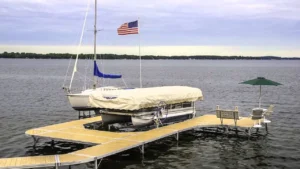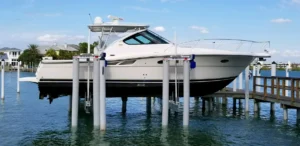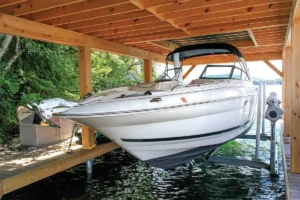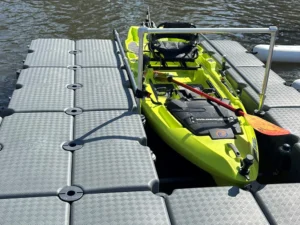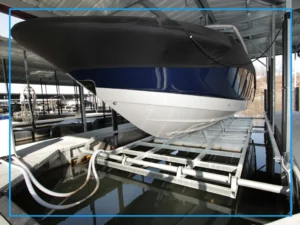What Is a Drive-On Floating Dock System and How Does It Work?
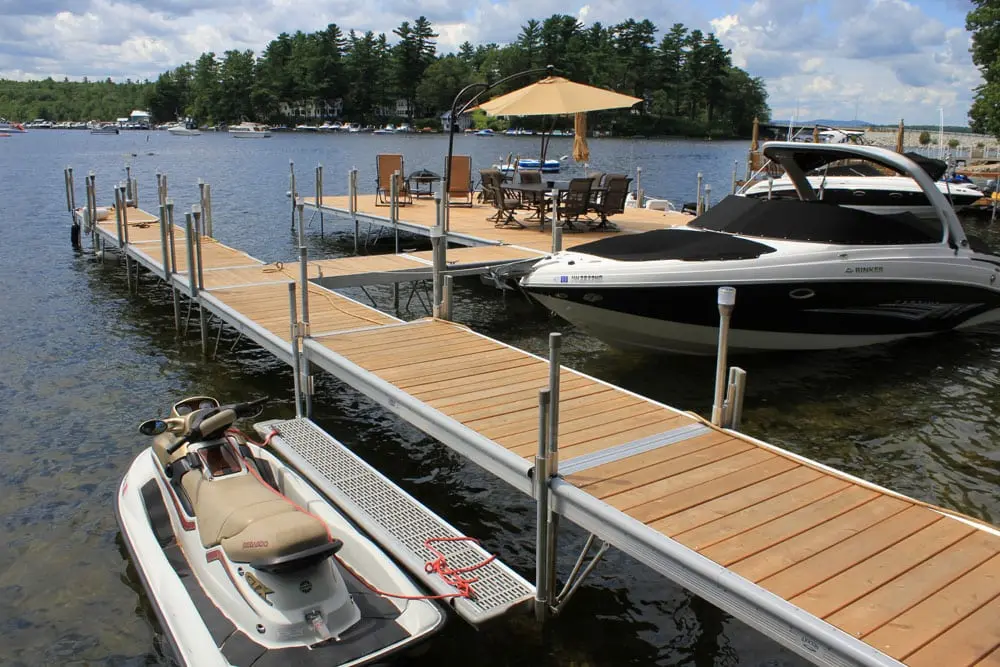
You are pulling up to your dock after a fun ride on your jet ski, gently gliding up, and—boom—you’re parked. No ropes, no trailers, no back-breaking lifting. Won’t that be convenient? That’s the beauty of a drive-on floating dock system.
These innovative docks let you drive your watercraft right up onto a floating platform, keeping it secure, dry, and ready for your next adventure. And they’re quickly becoming a favorite for boaters, jet ski enthusiasts, and waterfront property owners alike.
In this blog, we’ll break down exactly what a drive-on floating dock is and how it works. We will also discuss why it might just be the best investment for your waterfront setup.
What Is a Drive-On Floating Dock System?
A drive-on floating dock is a buoyant, modular platform that allows you to park your personal watercraft (PWC) or small boat by simply driving onto it from the water. No lifts. No cranking. Just cruise up and park. A drive-on system rises and falls with the water level, making it ideal for lakes, rivers, bays, and even coastal spots with tidal fluctuations.
These docks are often used for:
- Jet skis
- Small fishing boats
- Rigid inflatable boats (RIBs)
- Skiffs or small runabouts
Key Components of a Drive-On Dock
While designs can vary slightly, most systems include:
- Floating Platform: The main surface that supports your craft above the water.
- Rollers or Bunks: Help guide and support the hull as you drive up.
- Connectors/Anchoring System: Keep the dock secure and stable in the water.
- Ramp or Incline: Provides a smooth transition from water to dock.
- Optional Features: Walkways, handrails, cleats, and side tie-downs to enhance safety and convenience.
How It Works – Step-by-Step Process
Here’s what the whole experience looks like:
Step 1: Approaching the Dock
You line up your watercraft with the dock, slowing down as you get close.
Step 2: Driving or Gliding On
As you gently apply power, the rollers or inclined surface help guide your boat or jet ski smoothly up and out of the water.
Step 3: Docking and Securing
Once parked, the craft rests securely on the dock. Some systems include tie-downs, while others don’t need them at all for smaller watercraft.
Step 4: Launching Again
When you’re ready to head back out, just push off, gently reverse, or slide down—easy launch and go.
Benefits of Using a Drive-On Floating Dock
Still wondering if it’s worth it? Here are the biggest perks:
- No need for winches or muscle power.
- Keeps your boat dry, reducing algae growth and preventing damage from waves or bumping against traditional docks.
- Ideal for private dock setups—no hauling required.
- Fewer moving parts mean less to clean, fix, or replace.
- Floats rise and fall with the water, so you’re always at the right height.
Types of Drive-On Floating Dock Systems
You’ve got options depending on your budget and watercraft size:
- Modular Plastic Systems: Snap-together floating blocks—super customizable and easy to expand.
- Foam-Filled vs. Air-Filled Platforms: Foam offers durability and puncture resistance; air-filled may be lighter but can lose buoyancy over time.
- Custom-Built vs. Off-the-Shelf Kits: Go fully tailored for a perfect fit or grab a pre-made system for quick installation.
Things to Consider Before Installing
Before jumping in (literally or figuratively), think about:
- Watercraft Size & Weight: Not all docks support the same loads. Make sure to double-check specs.
- Water Depth & Bottom Conditions: Mud, rock, or sand can affect anchoring and dock stability.
- Wave & Wind Exposure: Sheltered areas are ideal. Open water may require additional anchoring.
- Local Rules & Permits: Some municipalities may require permits—especially in marine or environmentally protected zones.
- Budget & Space: Costs vary based on size, material, and optional features. Make sure your shoreline setup allows for installation.
Maintenance and Care Tips
Luckily, these docks are low-maintenance—but a little TLC goes a long way.
- Clean Rollers Regularly: Prevent grime or algae buildup for smooth docking.
- Inspect Seasonally: Check connectors, floats, and hardware at the start and end of each season.
- UV Protection: If exposed to constant sun, consider UV-resistant materials or coatings.
- Anchor Smart: Make sure your anchoring setup is stable and can handle occasional rough weather.
- Troubleshoot Early: If you notice difficulty docking or launching, inspect your rollers and alignment before it becomes a bigger issue.
To Summarize
A drive-on floating dock system offers an unbeatable mix of convenience, protection, and ease of use—especially for personal watercraft or small boat owners. No more messy tie-ups, hull scrapes, or algae headaches. Just smooth sailing in and out of the water.
If you’re ready to simplify your boating life, a drive-on dock might be the upgrade your waterfront has been waiting for.
Want to learn more? Contact 360 Boat Lifts today to explore floating dock options tailored to your watercraft and shoreline. Let’s get your boat out of the water and onto something smarter.

